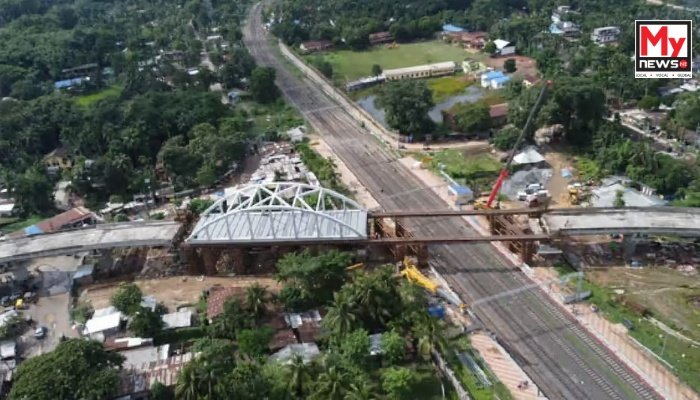
Northeast Frontier Railway Eliminates 28 Manned Level Crossings, Boosts Connectivity with New ROBs and RUBs
Guwahati: In a major infrastructure push aimed at improving transportation safety and efficiency in the northeastern region, the Northeast Frontier Railway (NFR) has successfully eliminated 28 manned level crossings (MLCs) and constructed 11 Road Over Bridges (ROBs) and 26 Road Under Bridges (RUBs) between April 2024 and March 2025.
The initiative, spread across key areas in Assam, Bihar, and West Bengal, marks a strategic move towards modernising the railway network and enhancing road-rail integration.
Kapinjal Kishore Sharma, Chief Public Relations Officer of NFR, said that the level crossings were removed using a mix of engineering solutions including ROBs, RUBs, Low Height Subways (LHS), direct closures, and strategic diversions. The move, he added, has significantly enhanced passenger safety, improved operational efficiency for rail services, and reduced delays for both trains and vehicular traffic.
The infrastructure upgrades were executed by a coordinated effort between multiple agencies including the National Highways Authority of India (NHAI), Railway Divisions, Construction Wings, and Deposit Agencies, with active collaboration from respective state governments. Major cities such as Dibrugarh, Kamrup Metro, Jorhat, and Lakhimpur saw the commissioning of critical ROBs, while RUBs and LHS structures were installed in areas like Alipurduar and Kokrajhar to cater to specific local traffic needs.
Each site was chosen after careful evaluation of its traffic volume and accident risk. For instance, high-traffic zones such as FM-57 in Jorhat and RM-257 in Lakhimpur were fitted with well-engineered ROBs to ensure uninterrupted connectivity, while lower-density zones were effectively managed through direct closures and minimal-resource interventions.
According to Sharma, the results of these developments are already visible. Congestion at former level crossing sites has eased considerably, accidents have reduced, and train operations have become smoother and more predictable. Importantly, these efforts have also catalysed economic activity by improving freight movement and accessibility in remote and border districts, thereby reinforcing the region’s connectivity backbone.
Beyond infrastructure, the environmental impact is also noteworthy. The elimination of frequent vehicle stoppages at crossings has led to reduced fuel consumption and emissions—aligning with India’s broader sustainability goals. With this initiative, the Northeast Frontier Railway has reinforced its commitment to building a safer, faster, and greener future for transportation in the region.
Read More: China’s Mega Dam on Yarlung Tsangpo Triggers Alarm in India’s Northeast and Bhutan
